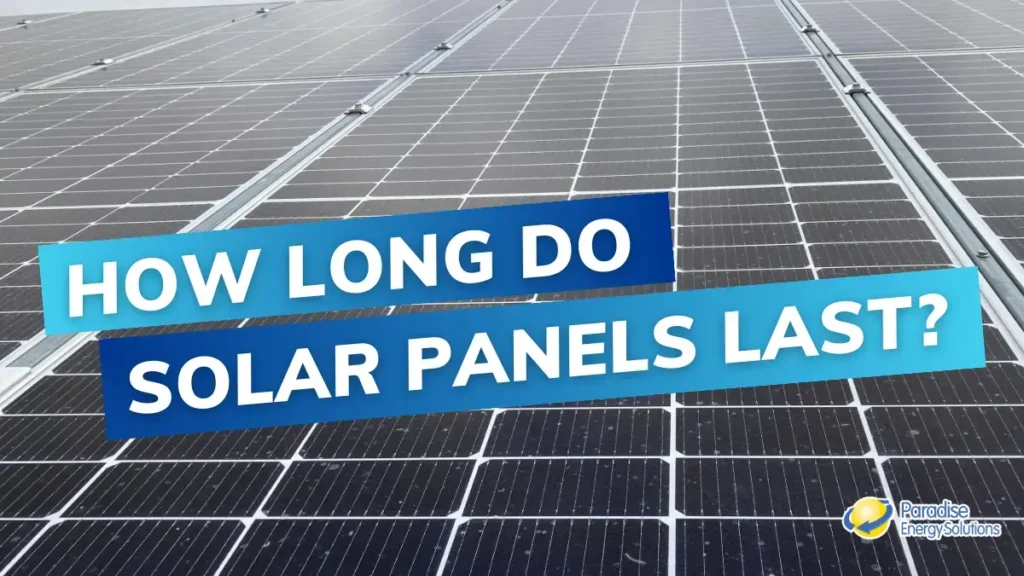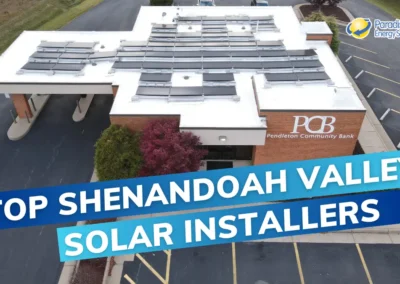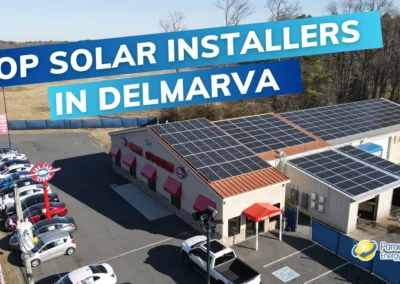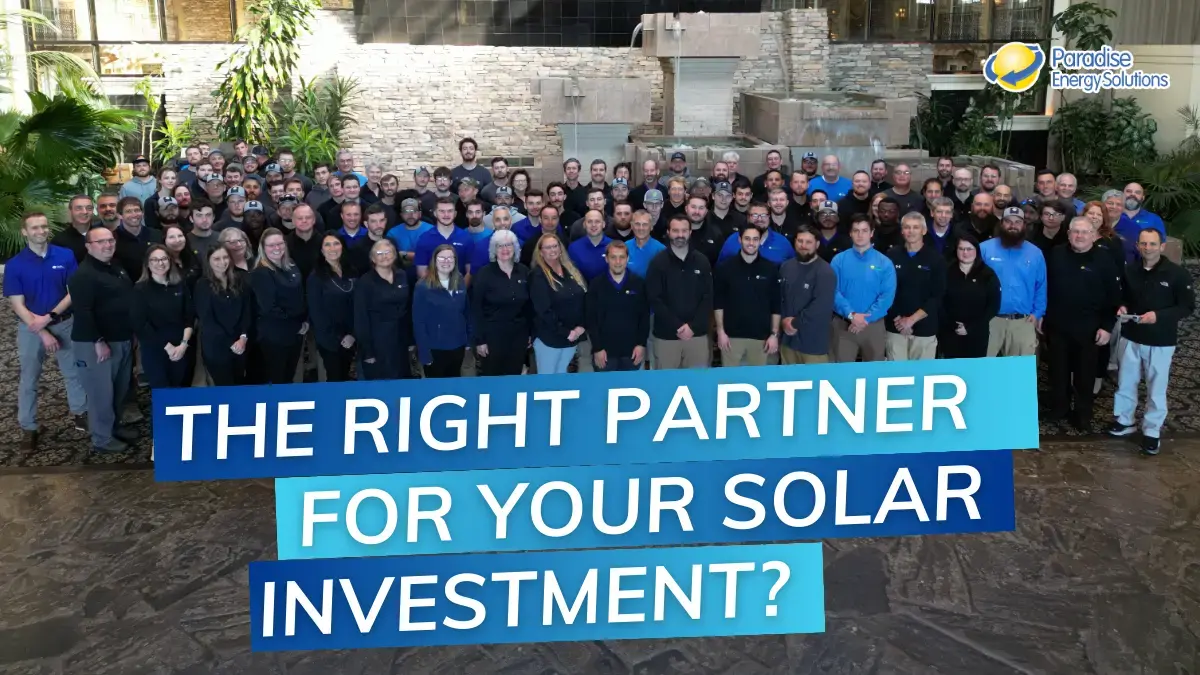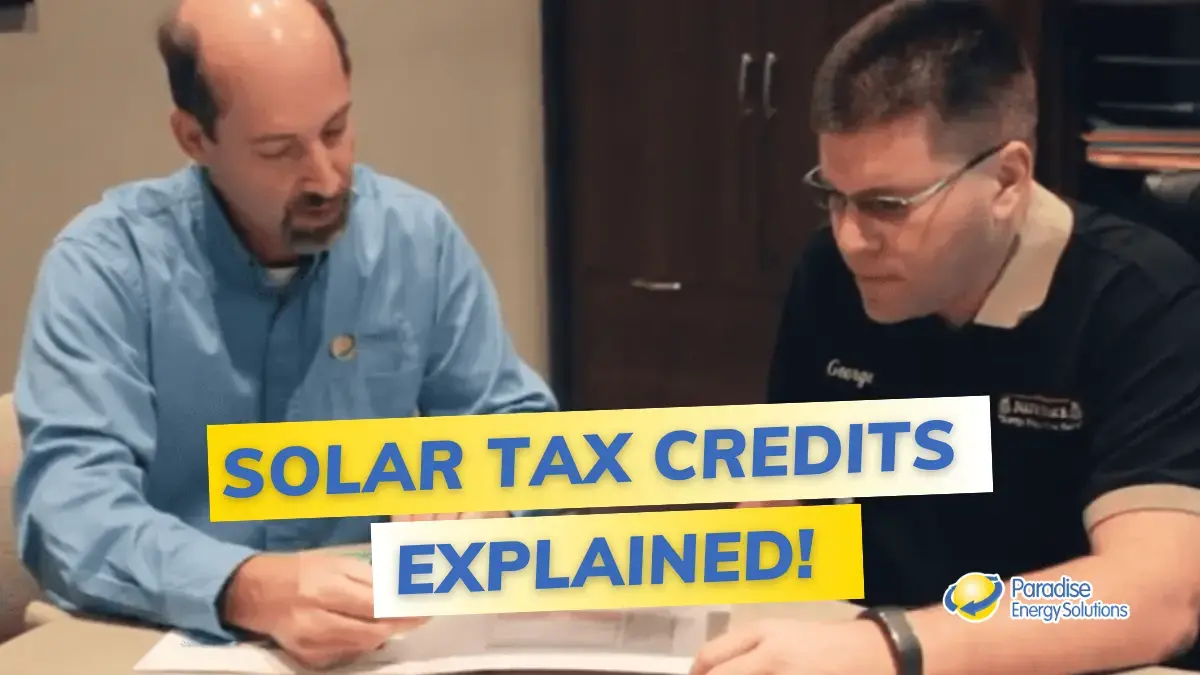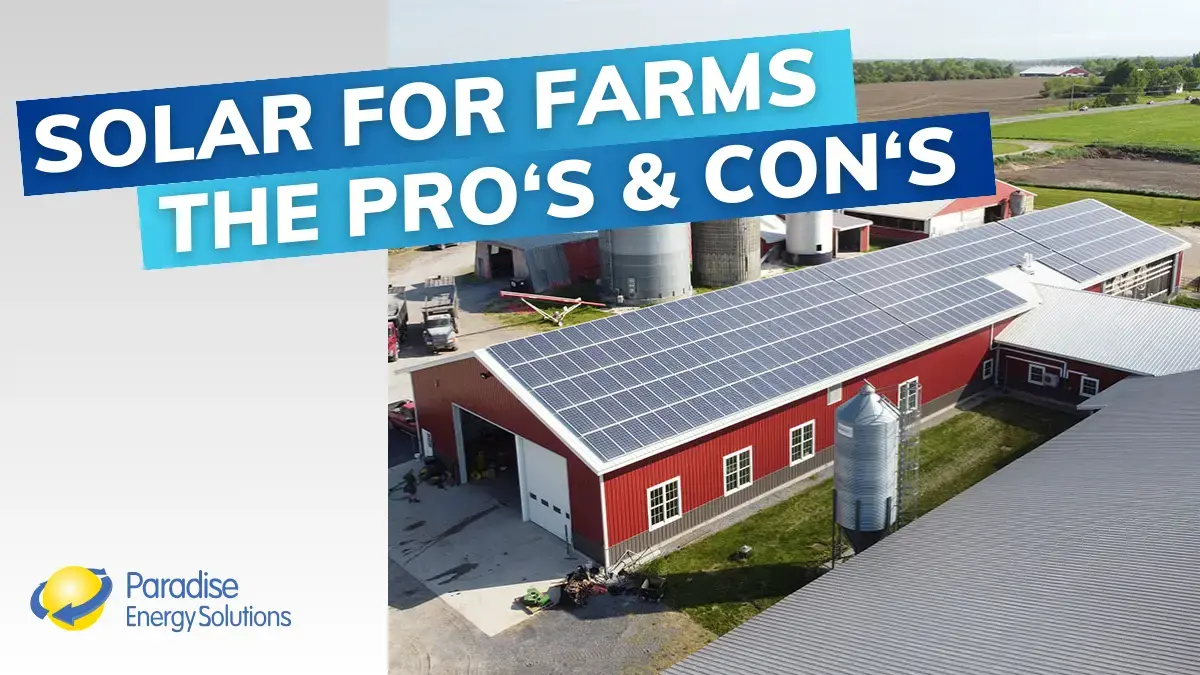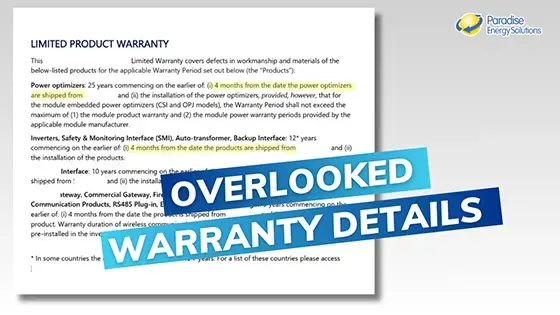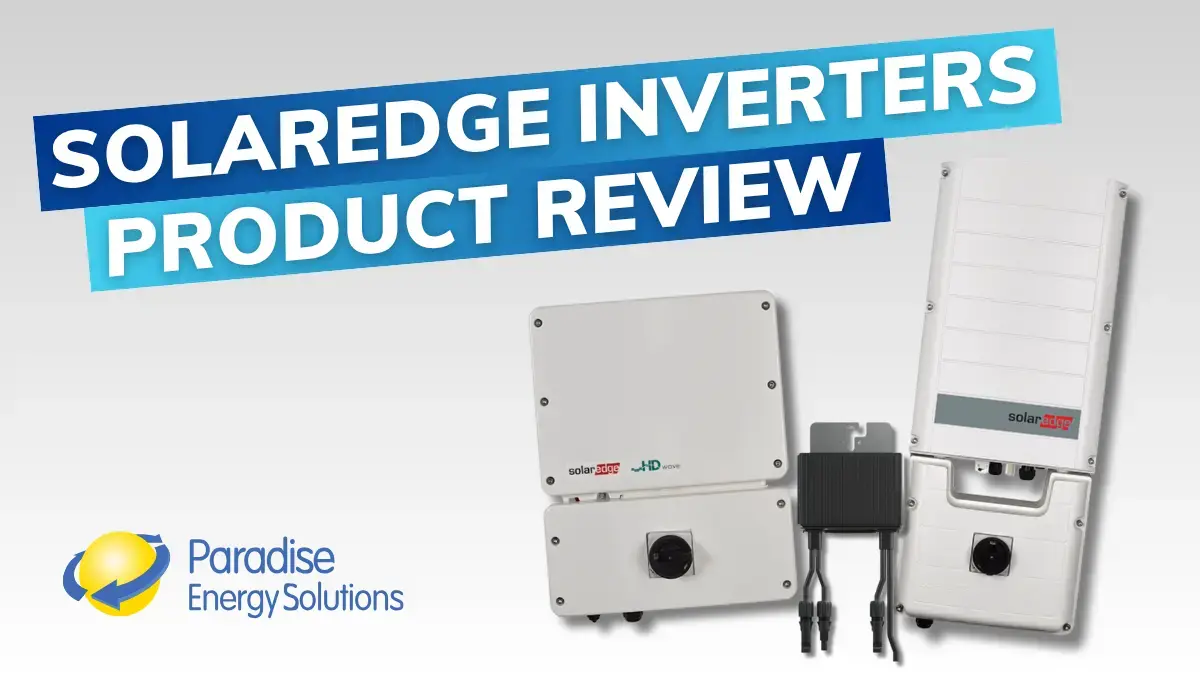As of 2025, understanding solar panel degradation remains crucial when investing in solar, even as industry strides extend panel lifespans. While many assets (fine wines, cast iron skillets, 401(k)s) often improve over time, solar panels gradually lose efficiency. Modern panels degrade at an average of just 0.5–0.8% per year, sometimes even less. Most continue producing clean energy well beyond their 25–30‑year warranties.
Whether it’s a car, tractor, or complex machinery, most machines have a finite useful life. Though a fantastic long-term investment for many businesses, farms, and homes, solar panels are no different in this regard.
While deciding if solar is right for you, it’s important you understand your solar panel’s life expectancy. In this blog, we’ll discuss how long solar panels last, solar panel efficiency over time, and what you can do to prevent solar panel degradation.
Understanding Solar Panel Degradation and How It Affects How Long Solar Panels Will Last
So, how long do solar panels last? Depending on the manufacturer, solar panels’ performance can be guaranteed for 25 – 30 years, but it’s very possible that your panels will go on to produce electricity for longer than that. The first 25 to 30 years after your solar installation is considered the system’s “useful life”, but panels can still produce electricity for decades longer.
What is a solar panel’s useful life? Like many other pieces of equipment, solar panels don’t perform at 100% for their entire life and then stop working in year 30. Instead, they produce less electricity at a very slow rate as they age. This process is called degradation.
Because of solar panel degradation, most panels’ production warranties change as they age. Manufacturers typically guarantee 90% of the panels’ production until the first ten years. After ten years, that percentage drops back to 80% for the remaining 15 – 20 years.
After the system’s useful life, your panels can continue producing electricity. However, depending on your financial goals, you may want to replace them with new ones that will produce electricity at a higher rate.
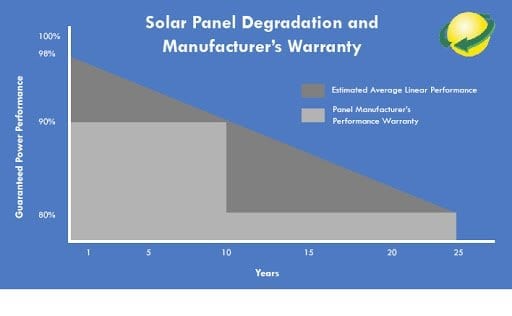
What is Solar Panel Degradation?
All solar panels slowly degrade over time, which means they’re producing less electricity from the same amount of sunlight. How and why does this happen? Various external factors (like weather) wear down on the panels and negatively impact their ability to produce electricity.
One way solar panel degradation happens is through microcracks that form in the silicon of the solar cells. These small cracks cause electrical connections to deteriorate, meaning there are fewer paths for those electrons from the sun to take, and thus less energy goes to your inverter and into your home, business, or farm. Other issues are junction box adhesion failures and discoloration.
Because there are a variety of ways panels can degrade, caused by a variety of factors, it’s a difficult problem to solve. Solar panel manufacturers are constantly evolving and coming up with ways to reduce that degradation rate so your panels can keep up their power output. But in the meantime, your panels are guaranteed to degrade at or below a specific rate, so you can rest assured your investment is a safe one.
Why Do Solar Panels Degrade?
There are many different factors that contribute to solar panel degradation rates, but many of them focus on something that’s pretty hard to control – the weather.
Thermal Cycling
One common way microcracks form is through thermal cycling. When it’s warm, just about everything expands. When its cold, things contract. Solar panels aren’t immune to this, and it’s that constant back and forth that puts them under strain and creates those little cracks.
Strong Winds
Similarly, strong winds can cause flexing of the panels – also known as a dynamic mechanical load. But as long as your solar system is installed by experts and you’re using panels of good quality, this shouldn’t be a major contributor to degradation.
Extreme cold and hot weather, humidity, and snow and ice also slowly contribute to solar panel degradation, as do solar system components with different voltage potentials.
Does Sunlight Cause Degradation?
Another question we get is “does sunlight cause degradation?” Sun is the very thing that makes solar panels tick! Thankfully, most solar panel manufacturers create panels with UV blockers that protect the panels from most damage, but yes – the sun itself does contribute to degradation.
In fact, solar panel degradation rates are highest just hours after installation when they’re first exposed to the sun and its UV rays. This is known as light-induced degradation (LID). Your panels can degrade 1 to 3% in this short amount of time, but after that, degradation slows down.
How Much Do Solar Panels Degrade and How Does It Affect the Efficiency of Solar Panels Over Time?
On average, solar panels degrade at a rate of .5-1% each year according to NREL. The solar panel manufacturer’s warranty backs this up, guaranteeing 90% production in the first ten years and 80% by year 25 or 30.
However, a study conducted by The National Renewable Energy Laboratory (NREL) shows a more accurate picture of solar panel degradation. This study examined the degradation rates for almost 2,000 solar systems worldwide in various climates and found that monocrystalline panels made after the year 2000 degraded at a rate of just 0.4%—less than half of the 1% rate used in the warranties.
While solar panels lose a few percentages immediately due to LID, the degradation rate slows significantly for the remainder of their lifetime.
How Can I Extend the Life of My Solar System?
Just like a car only runs for a certain number of miles or a piece of equipment starts to lose its touch after so many years, solar panel degradation is bound to happen. However, you’re still making a solid investment that is going to reduce your company’s overhead or your household’s monthly expenses.
But like regularly changing the oil in your car, are there ways you can extend the useful life of your solar panels? Yes! Here are four ways you can extend the life of your solar panels:
Work with a Professional Installer
You want to be sure that you’re working with certified industry experts that are going to install your system for the long run and with the utmost care, using high-quality solar panels and parts. This will go a long way toward keeping your energy production high throughout – and even beyond – the system’s life expectancy.
Pick the Right Location
Another factor you and your solar installer should consider when you’re designing your solar system is choosing a location. Try to avoid placing the panels near things that can cause physical damage, like the wind blowing trees and bushes against the panels, which may speed up degradation.
Periodic Maintenance and System Checks
Though solar is a relatively care-free investment, periodic maintenance checks and cleaning can also help extend the lifespan of solar panels. However, it’s imperative you work with products and companies that practice proper methods for cleaning and maintenance, as more harm than good could be done to your system.
Frequently Asked Questions (FAQs)
Do solar panels wear out or stop working?
Just because your solar system has reached the end of its expected life doesn’t mean it still can’t produce energy and save you money. Manufacturers determine the solar panel’s “useful life” is over once the panels’ production dips below 80% – but that doesn’t mean it’s useless. The panels will continue to produce energy for many years to come but at a lower efficiency level.
Degradation is a normal, unavoidable part of owning solar panels. Nothing lasts forever, but the savings your solar system generates for you throughout its useful life could be saved or reinvested into your website. The average payback period for a commercial solar system is 9 years and the average residential payback is 15 years, which leaves 15 to 20+ years of free electricity generation.
How long can solar panels last without sun?
Solar panels can store energy for later use through battery backup systems or take advantage of net metering, allowing you to draw power from the grid when sunlight is unavailable. This ensures a consistent power supply even during cloudy days or nighttime.
What happens to solar panels after 25 years? How is solar efficiency over time affected?
After 25 years, solar panels typically experience a decline in efficiency, operating at around 80% of their original capacity. While they still produce electricity, their output is reduced. Panels may also require more frequent maintenance or replacement of certain components.
Do solar panels make your roof last longer?
Solar panels can indeed help extend the lifespan of your roof by shielding it from direct sunlight, rain, and other environmental factors. This protective layer reduces wear and tear, potentially prolonging the roof’s durability and reducing the need for frequent repairs.
What is the average lifespan of a solar panel?
The average lifespan of a solar panel is about 25 to 30 years. Even after this period, many panels continue to function at a reduced efficiency, providing substantial long-term benefits and a reliable source of renewable energy.
Do solar panels need a lot of maintenance?
Solar panels require very little maintenance due to their durable construction and lack of moving parts. Regular cleaning to remove dirt and debris, along with periodic professional inspections, will ensure they continue to operate efficiently and last for many years.
What is the true efficiency of solar panels?
The true efficiency of solar panels typically ranges between 15% and 20%, depending on the specific technology and manufacturer. This efficiency rate indicates how effectively the panels convert sunlight into usable electricity, with advancements continually improving these figures.
